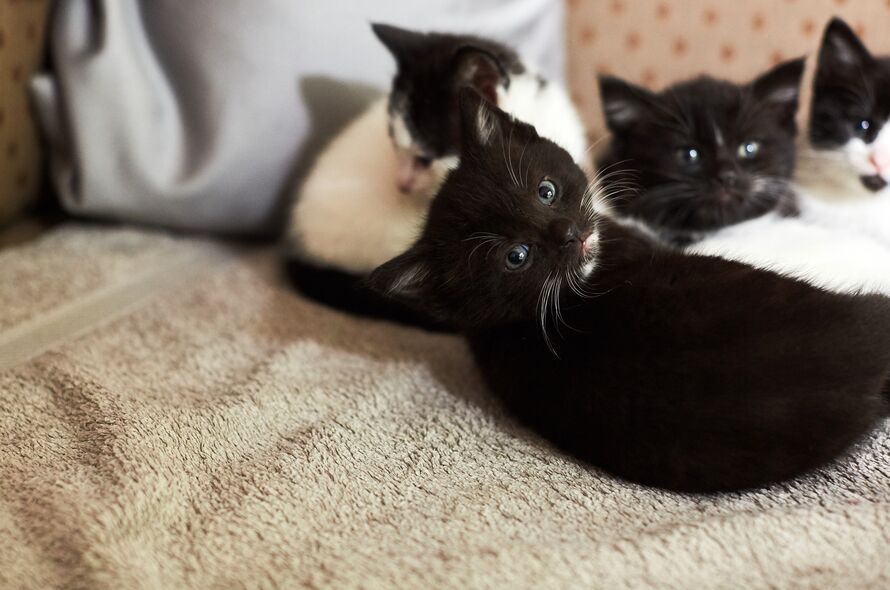To stop dogs from fighting in the same household, ensure they are both spayed/neutered and get them plenty of exercises and mental stimulation to prevent pent-up energy that can lead to conflict. Provide separate feeding areas and toys, and supervise their interactions to intervene if necessary.
Additionally, seek the help of a professional dog trainer or behaviorist if the fighting persists. Living with dogs who fight can be stressful and dangerous for both the dogs and the humans in the household. However, there are effective strategies to prevent and address this issue.
It’s important to understand the underlying causes of the conflicts and take proactive measures to create a harmonious environment for all. We will explore practical tips and solutions for stopping dogs from fighting in the same household, ensuring a peaceful and safe coexistence.
Recognizing Fight Triggers
Identifying signs of stress or anxiety: Look for body language cues such as lip licking, yawning, and tense posture. Tail tucked between legs and ears pinned back are also signs of distress.
Common scenarios causing aggression: Competition for attention, toys, or food can lead to conflict. Territorial disputes or guarding prized possessions also trigger fights.
Understanding resource guarding: Dogs may exhibit possessive behavior over food, toys, or sleeping areas. Learning to manage and defuse these situations is crucial for peaceful cohabitation.
Breed-specific Aggression Factors
Breed-Specific Aggression Factors: Understanding the role of breed tendencies is essential in dealing with historical aggression in specific breeds. Certain breeds may have innate characteristics that predispose them to aggression, such as territorial instincts or a strong prey drive. Recognizing these breed-specific traits can help owners anticipate and prevent potential conflicts. Additionally, it is crucial to consider the individual personalities and socialization experiences of the dogs involved. Proper training, supervision, and environmental management are key in mitigating breed-specific aggression factors.
Creating A Positive Environment
Creating a Positive Environment: Dogs should have separate feeding areas to prevent resource guarding and reduce the likelihood of conflict. Additionally, using calm voices and body language can help create a peaceful atmosphere in the household. Structured playtime is also crucial as it provides an outlet for energy and helps establish a routine, reducing potential tension between dogs.

Credit: www.battersea.org.uk
Implement Training Interventions
To stop dogs from fighting in the same household, establishing clear dominance without force is crucial. This can be achieved through training and consistency. Use commands to diffuse tense situations proactively, and reinforce positive behaviors. Obedience training benefits both dogs, improving their ability to respond to commands and enhancing their overall behavior. It is essential to establish leadership and maintain a calm, assertive energy in the household. Consistent exercise, mental stimulation, and positive reinforcement play a vital role in preventing conflicts. Moreover, providing each dog with its space allows them to retreat when they need a break. Implementing these training interventions will contribute to a harmonious and peaceful coexistence between dogs in the same household.
Establishing A Routine For Dogs
Establishing a routine for dogs is crucial for maintaining harmony in a multi-dog household. Consistent schedules for activities such as feeding, walking, and playtime help create a sense of predictability for the dogs, reducing potential triggers for conflicts. Additionally, providing individual attention to each dog is essential. This includes one-on-one time for training, walks, or simply spending quality time with each dog separately. Ensuring that each dog receives adequate attention can help prevent feelings of jealousy or competition, ultimately reducing the likelihood of conflicts. By incorporating these strategies into the daily routine, dog owners can effectively minimize the potential for conflicts and create a peaceful coexistence among their furry companions.
Professional Help For Dog Harmony
When dealing with dogs fighting in the same household, it’s crucial to seek professional help for resolving the issue. Recognizing the need to consult a behaviorist is the first step in addressing the problem effectively. Understanding dog psychology and seeking assistance from a professional can provide valuable insights and strategies to promote harmony among the dogs. By addressing the root cause of the conflict and implementing tailored interventions, it is possible to prevent and manage conflicts between dogs in the same household.
Monitoring And Adapting Strategies
Observing dog interactions over time: It’s essential to closely monitor the behavior and interactions between the dogs in the household. Look for any triggers or patterns that lead to conflicts and aggression. Take note of their body language and any specific situations that seem to incite tension.
Adjusting approaches as needed: Once you have observed the interactions, you can adapt your strategies accordingly. This may involve segregating the dogs during certain times, providing individualized attention and exercise, or implementing positive reinforcement techniques. It’s vital to be flexible and willing to try different methods to find what works best for your specific dogs.
Frequently Asked Questions Of How To Stop Dogs From Fighting In The Same Household
How Can I Prevent My Dogs From Fighting?
To prevent dogs from fighting, establish clear rules, provide separate feeding and resting areas, supervise their interactions, and seek professional help if needed.
What Are The Reasons Behind Dogs Fighting In The Same Household?
Dogs may fight due to competition for resources, lack of socialization, stress, or underlying medical issues. Understanding the triggers can help in resolving the conflicts.
Can Training Help In Stopping Dogs From Fighting?
Yes, training focused on positive reinforcement and behavior modification can help in managing and preventing conflicts between dogs in the same household. Professional trainers can provide tailored solutions.
Conclusion
Preventing dog fights requires patience, consistency, and understanding of their behavior. By providing enough space, managing resources, and giving each dog attention, conflicts can be minimized. Remember to seek professional help when needed and be proactive in addressing any signs of aggression.
With proper management and training, peaceful coexistence is achievable.



